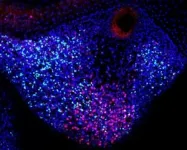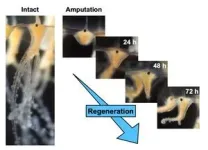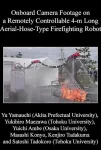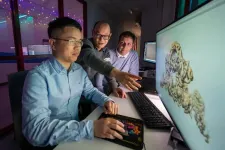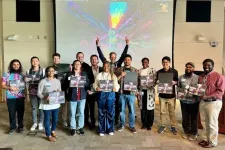(Press-News.org)
P. Hemachandra Reddy, Ph.D., a professor in the Texas Tech University Health Sciences Center (TTUHSC) School of Medicine’s Department of Internal Medicine who has researched healthy aging, dementia and other neurodegenerative diseases for more than 20 years, recently was named to the 2023 class of Fellows for the National Academy of Inventors (NAI).
The NAI is a member organization comprised of U.S. and international universities and governmental and nonprofit research institutes with more than 4,600 individual inventor members and fellows spanning more than 300 institutions worldwide. Its 2023 Fellowship class includes 162 academic inventors from 35 U.S. states and 10 countries.
Reddy has received three patents for his lab discoveries that promote healthy aging and identify mechanisms to detect and slow the progression of human Alzheimer’s disease. He has several other patents pending.
“I am honored and humbled to join the class of 2023 National Academy Inventors Fellowship; indeed, this honor means a lot to my lab members and me for the recognition of our research efforts,” Reddy said. “Personally, it is a dream come true to be an NAI Fellow. TTUHSC and Texas Tech University are great places to make impactful changes to our communities with new discoveries and inventions in healthy aging and dementia research. I sincerely thank all the lab members, particularly Chandra Kuruva, Ph.D., Subodh Kumar, Ph.D., and Murali Vijayan, Ph.D., for their efforts and contributions to the three patents.”
Academic inventors and innovators are nominated to the rank of NAI Fellow status by their peers for making outstanding contributions to innovation in areas such as patents and licensing, innovative discovery and technology, significant impact on society and support and enhancement of innovation. Nominees also must be a named inventor on patent(s) issued by the United States Patent and Trademark Office and affiliated with a university, non-profit research institute or other academic entity to qualify.
“Dr. Reddy is the second faculty member in the history of our university to receive the highest professional distinction awarded solely to inventors,” Lance R. McMahon, Ph.D., TTUHSC senior vice president for research and innovation, said. “NAI Fellows demonstrate a prolific spirit of innovation resulting in tangible impacts on society.”
Reddy’s experience and contributions have impacted several TTUHSC schools and departments. In addition to his role in the Department of Internal Medicine, he also serves as a professor in the Department of Pharmacology and Neuroscience at the School of Medicine, TTUHSC’s Julia Jones Matthews School of Population and Public Health, the TTUHSC Graduate School of Biomedical Sciences and the Department of Speech, Language and Hearing Sciences in the TTUHSC School of Health Professions.
Reddy has published more than 260 peer-reviewed articles related to Alzheimer’s disease and mitochondria research. According to the Google Scholar website, his articles have been cited more than 29,200 times with an h-index of 89 and an i10-Index of 195. The h-index is used to measure a researcher’s scientific productivity and the impact of their research upon science. The i10 index is the number of publications a researcher has produced that have received at least 10 citations.
Reddy was elected a Fellow of the American Neurological Association in 2014 and a Fellow of the American Association for the Advancement of Science in 2020. Though the accolades and recognition are gratifying, Reddy believes groups like the NAI are valuable because of the relationships and opportunities that come from meeting and learning from other scientists.
“It is amazing to watch and be a part of how biological and human science is moving forward,” Reddy said. “I sincerely thank all my current and former lab members for their dedicated efforts, and I appreciate my collaborators and peers who supported me all through my research career. Most of all I thank my parents and family members for their support and for understanding my passion for Alzheimer’s science.”
###
END
Vision is a complex process. The visual perception of the environment is created by a combination of different wavelengths of light, which are decoded as colours and brightness in the brain. Photoreceptors in the retina first convert the light into electrical impulses: with sufficient light, the cones enable sharp, detailed, and coloured vision. Rods only contribute to vision in low light conditions allowing for different shades of grey to be distinguished but leaving vision much less precise. The electrical nerve impulses are finally transmitted to ganglion cells in the retina and then via the optic nerve to the visual cortex in the ...
Imagine a flying dragon that doesn’t spout fire, but instead extinguishes it with blasts of water. Thanks to a team of Japanese researchers, this new kind of beast may soon be recruited to firefighter teams around the world, to help put out fires that are too dangerous for their human teammates to approach.
The blueprint of this novel firefighter robot, called the Dragon Firefighter, has now been published in Frontiers in Robotics and AI. And as it has been published as Open Science, roboticists around the world may freely ...
CORNELL UNIVERSITY MEDIA RELATIONS OFFICE
FOR RELEASE: Dec. 21, 2023
Kaitlyn Serrao
607-882-1140
kms465@cornell.edu
ITHACA, N.Y. – Cornell researchers partnered with New York livestock farmers to analyze transactions at farmers markets, finding that sales were better on Sundays, early in the morning, and during certain months of the year. The study, which researchers believe is the first peer-reviewed analysis of customer-level transaction data at farmers markets, gives new insights into how farmers can make markets more profitable for them.
The researchers and farmers used point-of-sale devices that record sales ...
Less than half of patients with malignant ureteral obstruction (MUO) – a serious complication of advanced cancer, with a poor prognosis – receive palliative care (PC) for their condition, reports a paper in the January issue of Urology Practice®, an Official Journal of the American Urological Association (AUA). The journal is published in the Lippincott portfolio by Wolters Kluwer.
Hospice care can promote patient comfort while avoiding aggressive and invasive treatments for MUO patients nearing the end ...
December 7, 2023 —The Journal of Continuing Education in the Health Professions (JCEHP) has published a supplement, "Conceptual Advances in Continuing Professional Development in the Health Professions," in which scholars of continuing professional development (CPD) creatively examine prevailing assumptions and propose new theoretical frameworks and empirical insights. Publication of the supplemental issue is supported by the Society for Academic Continuing Medical Education (SACME). JCEHP, the official journal of the Alliance for Continuing Education in the Health Professions, ...
Researchers at the UCLA Health Jonsson Comprehensive Cancer Center have received a five-year, $3 million grant from the National Cancer Institute to identify novel cancer biomarkers and develop AI that can detect and predict aggressive prostate cancer to help avoid unnecessary treatments and their associated negative side effects.
Despite recent advancements, prostate cancer remains a common and serious health issue for men, and current methods of screening and risk assessment can often lead to overdiagnosis and overtreatment. About 90% of people diagnosed with prostate cancer receive treatment, even though ...
Through an international collaboration, scientists at St. Jude Children’s Research Hospital leveraged data science, pharmacology and structural information to conduct an atomic-level investigation into how each amino acid in the receptor that binds adrenaline contributes to receptor activity in the presence of this natural ligand. They discovered precisely which amino acids control the key pharmacological properties of the ligand. The adrenaline receptor studied is a member of the G protein-coupled receptor (GPCR) family, and this family is the target of one-third of all Food and Drug Administration (FDA)-approved drugs. Thus, understanding how ...
Scientists at St. Jude Children’s Research Hospital revealed the complex structure of two Parkinson’s disease-related proteins, both of which are implicated in late-onset cases. Leucine-rich repeat kinase 2 (LRRK2) is a protein kinase that modifies other proteins in a process called phosphorylation; Rab29, a member of the Rab GTPase family that regulates cellular trafficking, modulates the activity of LRRK2. How Rab29 and LRRK2 work synergistically to cause Parkinson’s disease remains ...
Doctors diagnosed Christopher Gregg, Ph.D., member of the Nuclear Control of Cell Growth and Differentiation Program at Huntsman Cancer Institute at the University of Utah (the U) and neuroscientist and professor of neurobiology and human genetics at the U, with stage 4 metastatic breast cancer in 2018. At that point, he started thinking of ways to improve his treatment.
“The core problem of metastatic cancer is it evolves,” says Gregg. “There may be a treatment that works today but eventually ...
This photo of Saturn was taken by NASA's Hubble Space Telescope on October 22, 2023, when the ringed planet was approximately 850 million miles from Earth. Hubble's ultra-sharp vision reveals a phenomenon called ring spokes.
Saturn's spokes are transient features that rotate along with the rings. Their ghostly appearance only persists for two or three rotations around Saturn. During active periods, freshly-formed spokes continuously add to the pattern.
In 1981, NASA's Voyager 2 first photographed the ring spokes. NASA's Cassini orbiter also saw the spokes during its 13-year-long mission that ended in 2017.
Hubble continues ...

